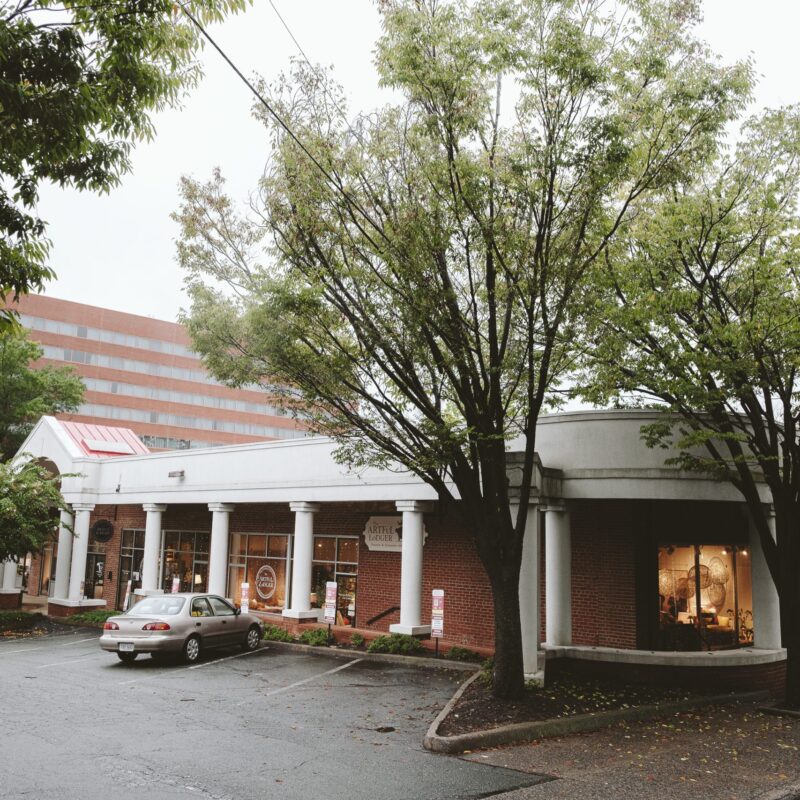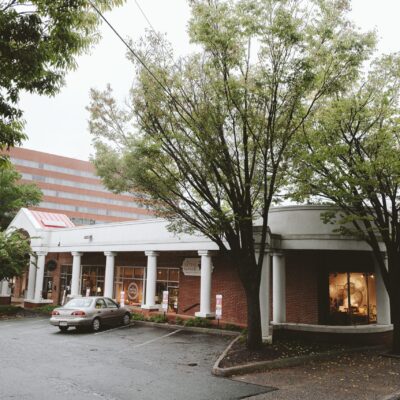When David and Holli Traud moved into their house in Keswick last May, it had the clean, safe feeling of a brand-new building, complete with white picket fence. “We had high hopes,” David Traud remembers. But something wasn’t right: The tap water smelled and tasted bad.
|
The Old Dominion Equine Association moved into 6539 Gordonsville Road five years ago, but the effects from the site’s former days as a service station are still being felt. One nearby family, whose well has been tainted, still cannot drink water from their own faucet. |
Thinking the water was just stale from sitting unused, the Trauds tried waiting a couple of weeks. But the problem got worse instead of better, so they paid several hundred dollars to have their water tested. In mid-June, David says, “[The lab] called me personally and said, ‘We got some disturbing results here—do not drink the water. We have gasoline components.’ At that point my wife was staying in North Carolina, and I called and said ‘Don’t come home.’”
For the next 10 weeks, she didn’t, staying with family instead. At the time, she was breastfeeding their newborn son. Meanwhile, David and his neighbors, David and Irene Mullins—who had noticed a problem with their well, too—were going through a series of tests and visits from the state Department of Environmental Quality. The news wasn’t good. Not only were both wells “severely impacted,” according to DEQ geologist Todd Pitsenberger, but the Trauds and Mullins learned that the gas had come from an underground storage tank at a defunct nearby service station, the E&D Market, where a gas leak had been detected as early as 1998.
At that time, Pitsenberger explains, the DEQ tested soil around the tanks and “believed the release was relatively minor.” What’s more, “There were no wells or springs or other potential receptors right there in the immediate vicinity.” When the Trauds’ and Mullins’ houses were built in 2007, though, the county health department issued permits for their wells without any knowledge of the prior DEQ case next door.
That frustrates David Traud. A year after moving in, he and his family still can’t drink from their faucets. A filtration system installed by the DEQ makes the water usable for washing, but Traud fills gallon jugs at work for drinking. Contracting with a private consulting company, Vista Environmental, the DEQ has issued a Corrective Action Plan calling for new wells to be drilled at the Traud and Mullins houses by July.
Ultimately, the $81,000 cleanup cost will be the responsibility of the owners of the former gas station. But the Trauds have already borne multiple expenses, including a water test, a lead test for their son (which was negative), lots of bottled water and a ruined $3,000 water softener. “It’s been a very, very hard year for us,” David Traud says.
Like most people, the Trauds were previously unaware of how many leaky gas tanks exist at older service stations. “They started putting tanks in the ground back in the ‘40s and ‘50s,” says Pitsenberger, “and nobody really thought ‘These things are going to leak.’” But, starting in the mid-’80s, they did. The EPA now closely regulates gas station tanks, but thousands of older stations still have leaks. In fact, because of population density and geological factors, Albemarle County is particularly polluted by underground tanks. The E&D Market case is only one of 27 active cases in Albemarle right now.
C-VILLE welcomes news tips from readers. Send them to news@c-ville.com.






